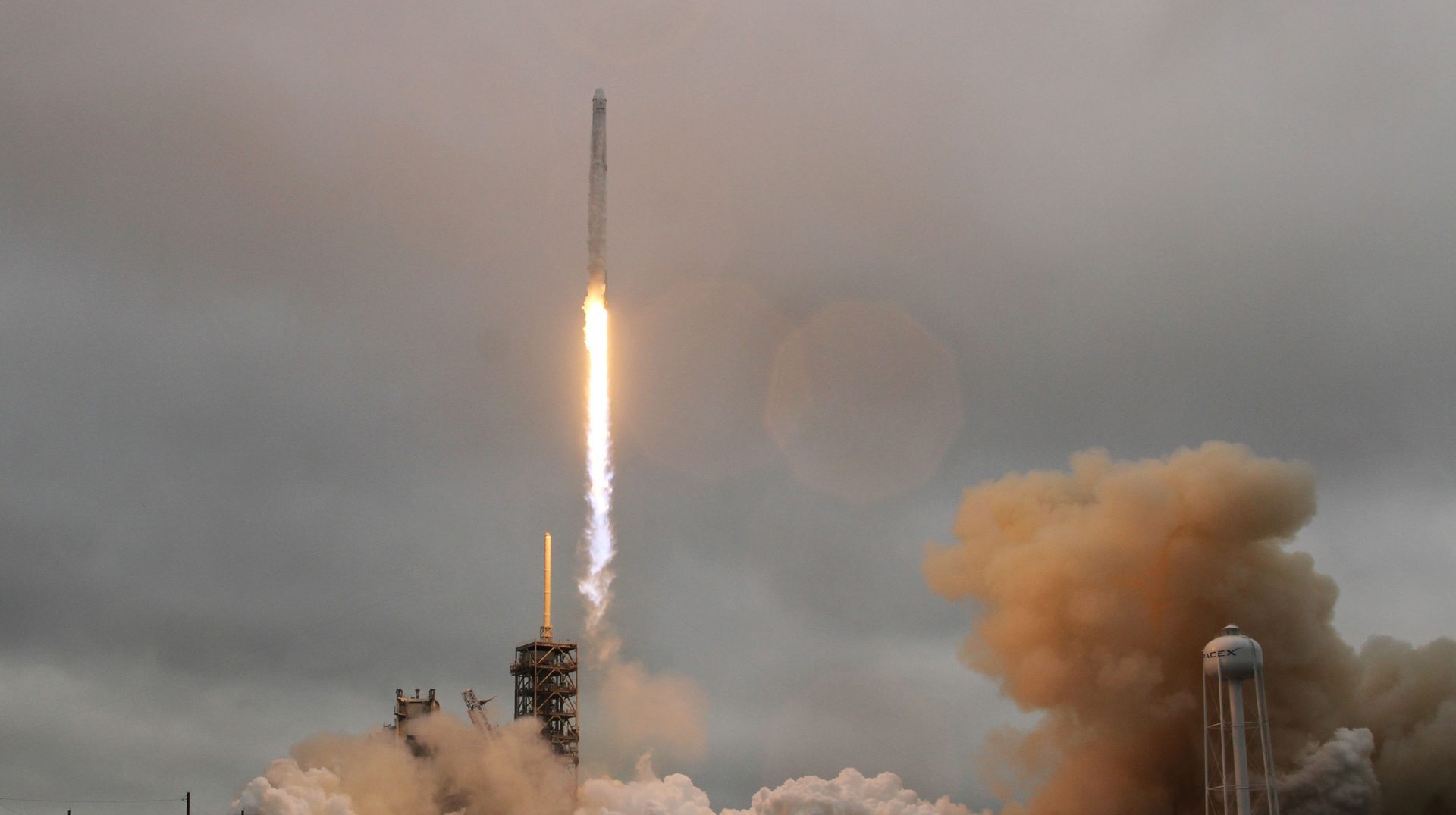

A reliable self-landing—and, therefore, reusable—rocket is key to both unmanned space exploration and the cargo-launching business potential of companies like Elon Musk’s SpaceX and competitors like ULA, Blue Origin, and Arianespace. (Musk has said the ability to reuse a rocket could drop costs by up to 30 percent.)
But when you’re talking about delivering expensive scientific equipment to other planets, the rocket can’t just be reusable—it has to be accurate. This has been an issue for NASA scientists and others going back to the 1960s, according to Quartz, which write that the imaginary ellipse in which an unmanned rocket is expected to land has shrunk from about 93 miles, for the Mars Pathfinder rover in 1997, to about 12 miles for the Mars Curiosity rover 15 years later. But 12 miles is still a massive amount of baked-in uncertainty, due in no small part to the fact that those rover deliveries still relied on the use of parachutes—not exactly the most accurate technology. SpaceX, meanwhile, has been able to reduce that area, for Earth-based landings at Florida’s Cape Canaveral at least, to between around 22 and 66 yards. That’s a game-changing improvement.

Rocket Must Calculate Best Return Route ” in a Fraction of a Second”
The secret, unsurprisingly, is massive amounts of math. The rocket booster you see above, in what looks like a take-off video run backwards, is really just a huge, self-flying robot. The issue is how to slow a spacecraft through planetary atmosphere at hypersonic speeds; according to Quartz, “SpaceX, in developing its reusable rocket, is the only organization to have brought a rocket back from space by actually flying it to Earth at that velocity, and it has shared its groundbreaking work on this aerodynamics problem with NASA to help scientists there plan future Martian missions.” Slowing down is the first (extremely) tricky part; flying itself down and successfully landing is the next.
Doing that is even thornier than it might seem, since the enormous distances across space and contending with unreliable radio signals means communication with the rocket is unreliable at best. So the thing needs to fly itself, and to do that, it has to figure out how to get to the planet’s surface without running out of fuel—a calculation that needs to happen “in a fraction of a second” before it crashes, according to Lars Blackmore, SpaceX’s rocket team lead and formerly of MIT and Caltech’s Jet Propulsion Laboratory. According to Tim Fernholz at Quartz:
The solution involves solving a “convex optimization problem,” a common challenge in modern machine learning. In wildly reductive layman’s terms, it involves considering all the possible answers to the question of “what’s the best way to get from here to the landing pad without running out of fuel” as a geometric shape, and uses mathematical tools developed first by John non Neumann, the father of game theory, and refined by Indian mathematician Narendra Karmarkar in the 1980s, to quickly choose the best way down from that set.
Tim Fernholz, Quartz
For those of us more comfortable with colored drawings, it looks something like this:

The process is getting more reliable, with SpaceX successfully landing its last four flights (three failures since the company’s initial launch in 2015 were reportedly caused by hardware issues rather than a failure to navigate to the landing area). So, next time you see this incredible self-landing technology in action—a SpaceX commercial resupply lifted off for the International Space Station three days ago—realize you’re looking at the world’s most massive, expensive, and technologically-advanced autonomous drone.
Via Quartz.